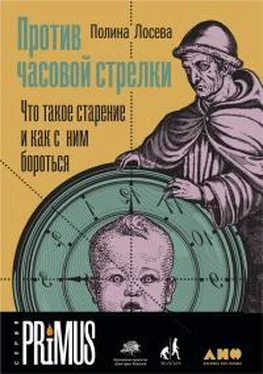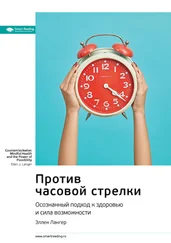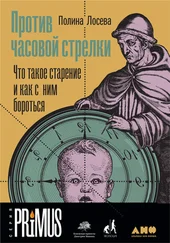Storer M. et al. Senescence is a developmental mechanism that contributes to embryonic growth and patterning // Cell. 2013 Nov; 155 (5): 1119–1130.
Muñoz-Espín D. et al. Programmed cell senescence during mammalian embryonic development // Cell. 2013 Nov; 155 (5): 1104–1118.
Goldsmith T. C. Evolvability, population benefit, and the evolution of programmed aging in mammals // Biochemistry (Moscow)/2015 Dec; 82: 1423–1429.
Bredesen D. E. The non‐existent aging program: how does it work? // Aging Cell. 2004 Sep; 3 (5): 255–259.
Gavrilova N. S., Gavrilov L. A., Severin F. F., Skulachev V. P. Testing predictions of the programmed and stochastic theories of aging: Comparison of variation in age at death, menopause, and sexual maturation // Biochemistry (Moscow). 2012 Jul; 77: 754–760.
Skulachev V. P. Aging is a specific biological function rather than the result of a disorder in complex living systems: biochemical evidence in support of Weismann's hypothesis // Biochemistry (Moscow). 1997 Nov; 62 (11): 1191–1195.
Longo V. D., Mitteldorf J., Skulachev V. P. Programmed and altruistic ageing // Nature Reviews Genetics. 2005 Nov; 6: 866–872.
Skulachev M. V. & Skulachev V. P. New data on programmed aging – slow phenoptosis // Biochemistry (Moscow). 2014 Oct; 79: 977–993.
Zhao Y. Naked mole rats can undergo developmental, oncogene-induced and DNA damage-induced cellular senescence // PNAS. 2018 Feb; 115 (8): 1801–1806.
Bradley A. J., McDonald I. R., Lee A. K. Stress and mortality in a small marsupial ( Antechinus stuartii , Macleay) // General and Comparative Endocrinology. 1980 Feb; 40 (2): 188–200.
Terry D. F. et al. Lower all‐cause, cardiovascular, and cancer mortality in centenarians' offspring // Journal of the American Geriatrics Society. 2004 Nov; 52 (12): 2074–2076.
Kaplanis J. et al. Quantitative analysis of population-scale family trees with millions of relatives // Science. 2018 Apr; 360 (6385): 171–175.
Ruby J. G. et al. Estimates of the heritability of human longevity are substantially inflated due to assortative mating // Genetics. 2018 Nov; 210 (3): 1109–1124.
Gavrilov L. A., Gavrilova N. S., Olshansky S. J., Carnes B. A. Genealogical data and the biodemography of human longevity // Social Biology. 2002; 49 (3–4): 160–173.
Yahin A. I. et al. Genetics of aging, health, and survival: dynamic regulation of human longevity related traits // Frontiers in Genetics. 2015 Apr; 6: 122.
Hjelmborg J.vB. et al. Genetic influence on human lifespan and longevity // Human Genetics. 2006 Feb; 119: 312.
Van Den Berg N. et al. Longevity defined as top 10 % survivors and beyond is transmitted as a quantitative genetic trait // Nature Communications. 2019 Jan; 10: 35.
Austad S. N. & Fischer K. E. Sex differences in lifespan // Cell Metabolism. 2016 Jun; 23 (6): 1022–1033.
Franceschi C. et al. Do men and women follow different trajectories to reach extreme longevity? // Aging Clinical and Experimental Research. 2000; 12: 77–84.
Hoogendijk E. O. et al. Sex differences in healthy life expectancy among nonagenarians: A multistate survival model using data from the Vitality 90+ study // Experimental Gerontology. 2019 Feb; 116: 80–85.
Foo Y. Z., Nakagawa S., Rhodes G., Simmons L. W. The effects of sex hormones on immune function: a meta‐analysis // Biological Reviews. 2016 Jan; 92 (1): 551–571.
Arsenović-Ranin N. et al. Influence of aging on germinal centre reaction and antibody response to inactivated influenza virus antigens in mice: sex-based differences // Biogerontology. 2019 May; 20: 475–496.
Horstman A. M., Dillon E. L., Urban R. J., Sheffield-More M. The role on androgens and estrogens on healthy aging and longevity // The Journals of Gerontology: Series A. 2012 Nov; 67 (11): 1140–1152.
Min K.-J., Lee C.-K., Park H.-N. The lifespan of Korean eunuchs // Current Biology. 2012 Sep; 22 (18): R792–R793.
См. п. 153.
Davis E. J., Lobach I., Dubal D. B. Female XX sex chromosomes increase survival and extend lifespan in aging mice // Aging Cell. 2018 Dec; 18 (1): e12871.
Dehbi A. Z. A., Radstake T. R. D. J., Broen J. C. A. Accelerated telomere shortening in rheumatic diseases: cause or consequence? // Expert Review of Clinical Immunology. 2013; 9 (12): 1193–1204.
Atzmon G. et al. Genetic variation in human telomerase is associated with telomere length in Ashkenazi centenarians // PNAS. 2010 Jan; 107 (suppl 1): 1710–1717.
Soerensen M. et al. Genetic variation in TERT and TERC and human leukocyte telomere length and longevity: a cross‐sectional and longitudinal analysis // Aging Cell. 2011 Dec; 11 (2): 223–227.
Criscuolo F., Smith S., Zahn S., Heidinger B. J., Haussmann M. F. Experimental manipulation of telomere length: does it reveal a corner-stone role for telomerase in the natural variability of individual fitness? // Philosophical Transactions of the Royal Society B. 2018 Mar; 373 (1741): 2016.0440.
Robert L. & Labat-Robert J. Longevity and aging: role of genes and of the extracellular matrix // Biogerontology. 2015; 16: 125–129.
Pilling L.C. et al. Human longevity: 25 genetic loci associated in 389,166 UK biobank participants // Aging. 2017 Dec; 9 (12): 2504–2520.
Pignolo R. J. Exceptional human longevity // Mayo Clinic Proceedings. 2019 Jan; 94 (1): 110–124.
Soerensen M. et al. Evidence from case – control and longitudinal studies supports associations of genetic variation in APOE, CETP , and IL6 with human longevity // AGE. 2013; 35: 487–500.
Niu W., Qi Y., Qian Y., Gao P., Zhu D. The relationship between apolipoprotein E ɛ2/ɛ3/ɛ4 polymorphisms and hypertension: a meta-analysis of six studies comprising 1812 cases and 1762 controls // Hypertension Research. 2009 Oct; 32: 1060–1066.
Revelas M. et al. Review and meta-analysis of genetic polymorphisms associated with exceptional human longevity // Mechanisms of Ageing and Development. 2018 Oct; 175: 24–34.
Morris B. J. et al. FOXO3 – a major gene for human longevity // Gerontology. 2015 Mar; 61 (6): 515–525.
Giuliani C. et al. Genetics of human longevity within an eco-evolutionary nature-nurture framework // Circulation Research. 2018 Sep; 123: 745–772.
Zeng Y. et al. Sex differences in genetic associations with longevity // JAMA Network Open. 2018 Aug; 1 (4): e181670.
Trimmers P. R. H. J. et al. Genomics of 1 million parent lifespans implicates novel pathways and common diseases and distinguishes survival chances // eLife. 2019; 8: e39856.
Читать дальше
Конец ознакомительного отрывка
Купить книгу












